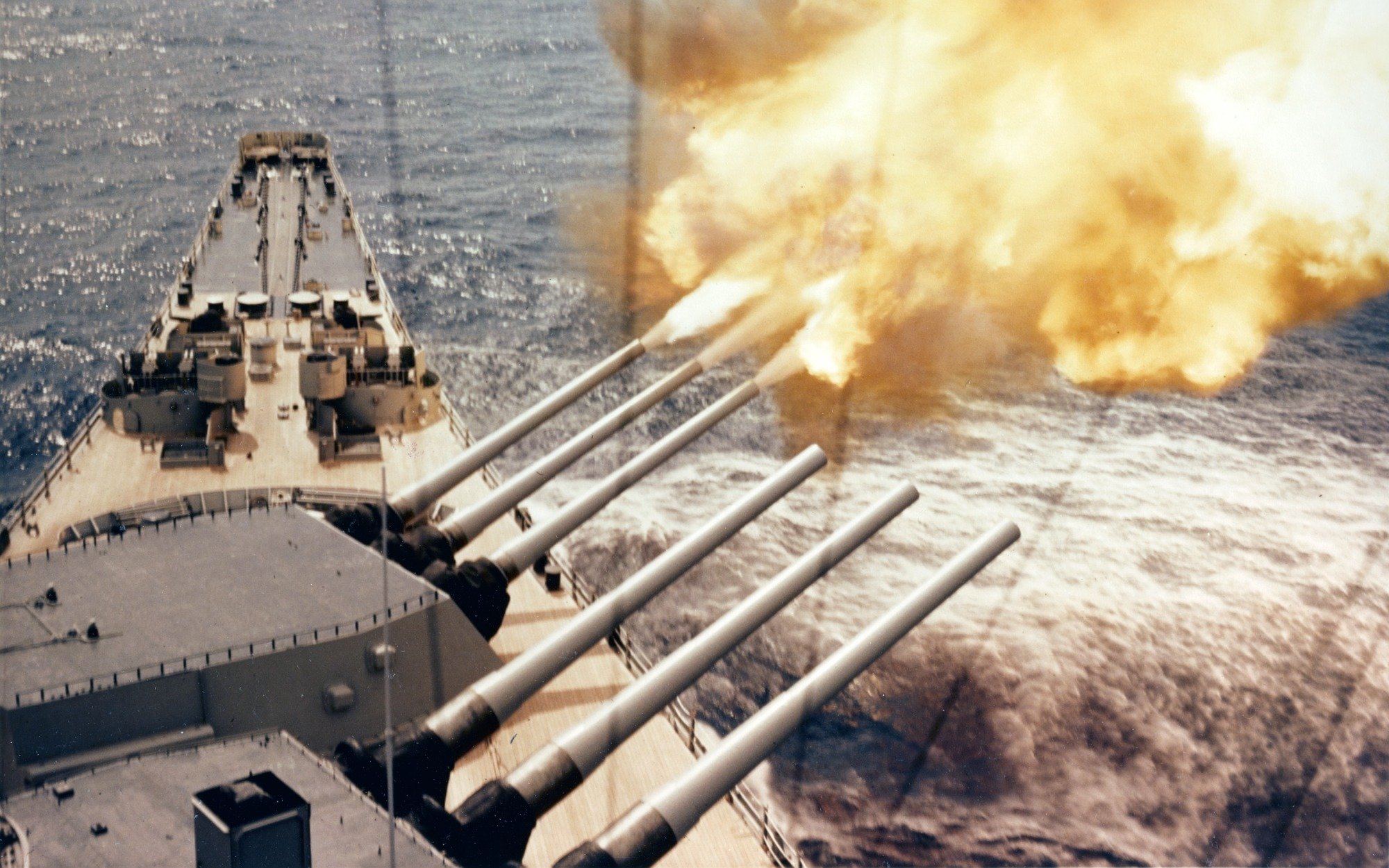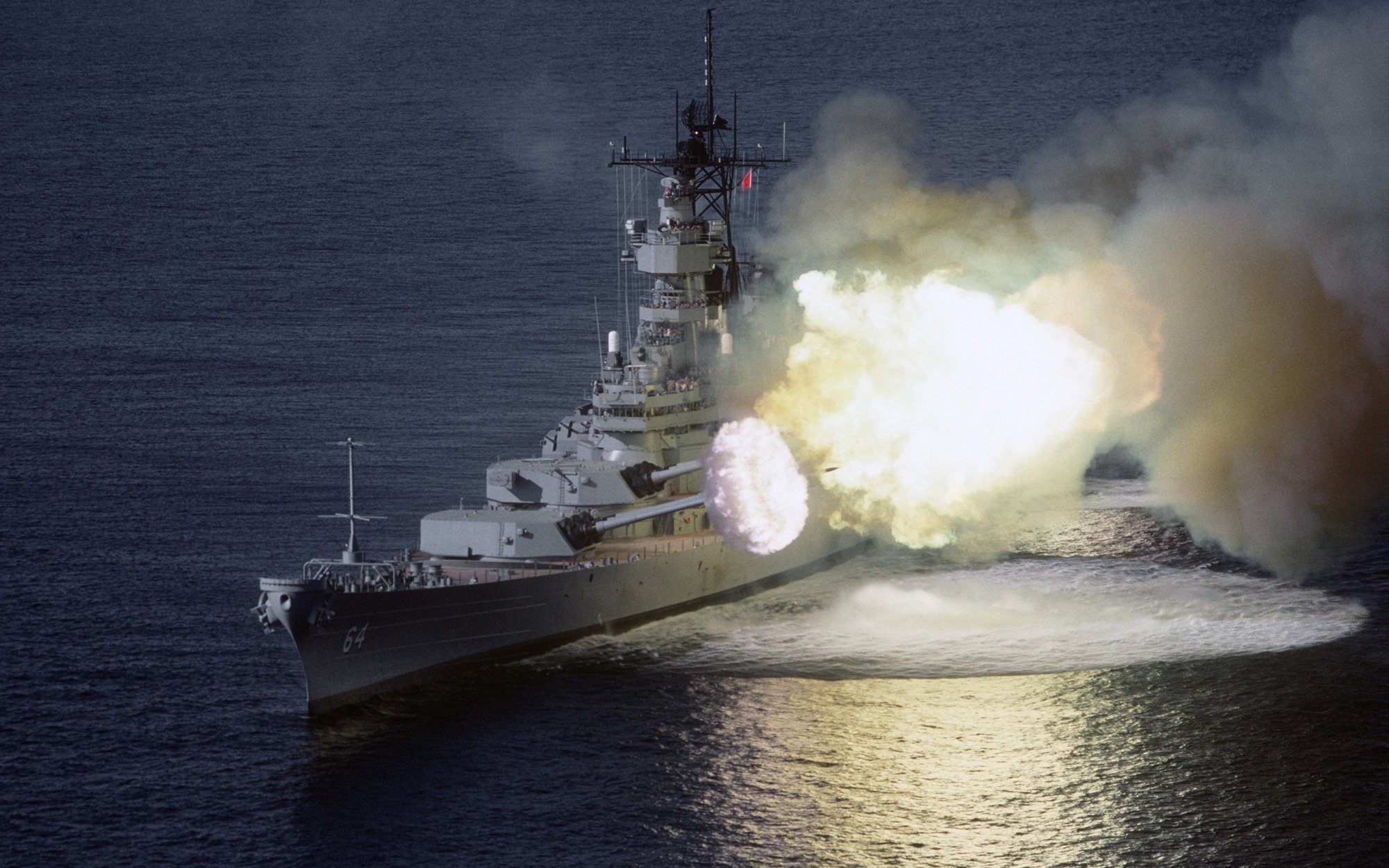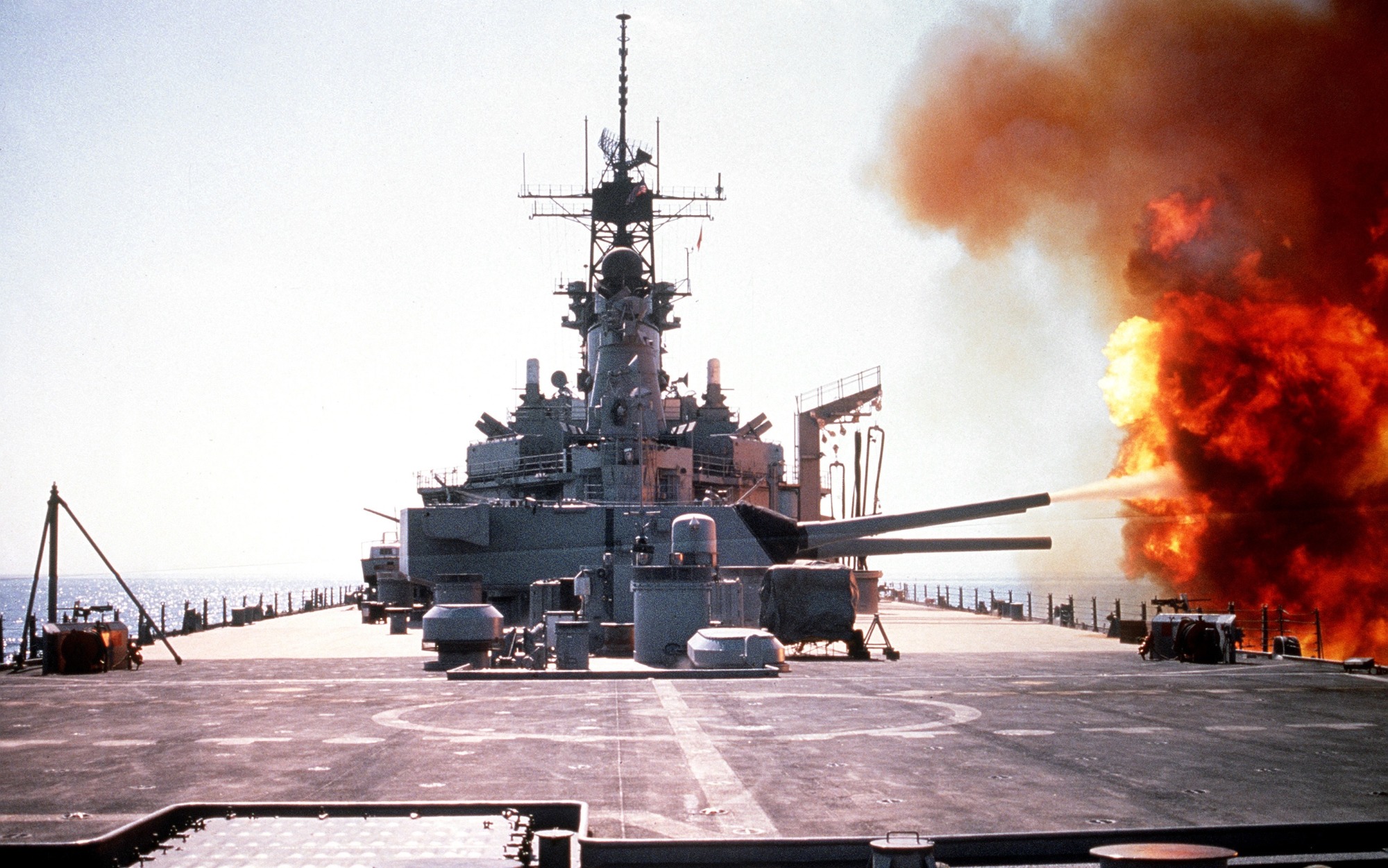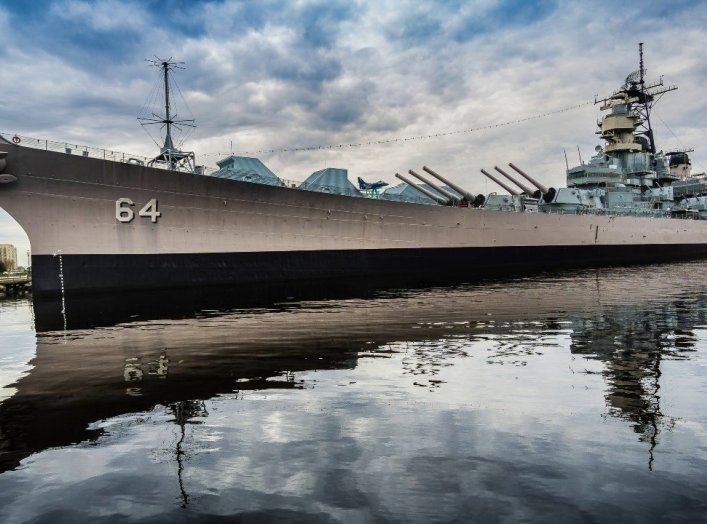Iowa-Class battleship USS Wisconsin was completed in time to serve in the final year of the Second World War against the Japanese Empire. She would go to war far more than she could have ever dreamed of.
USS Wisconsin, The Comeback Kid Battleship: For centuries, naval power was primarily defined by building bigger and bigger ships.
From the ill-fated Vasa to Nelson’s HMS Victory, size meant power. This theory was built on throughout the 19th century as ships met in “lines of battle” and savaged each other with cannon shot. By the time the early 20th century rolled around, wood and canvas had given way to steel and oil, and the size of the new dreadnought battleships was a thing to behold.
As tensions rose through the 1930s, navies worldwide sought to build even bigger ships for the showdown they felt was inevitable.
Seeing the rapid expansion of the Imperial Japanese Navy in the late 1930s, the U.S. Navy sought to catch up. It commissioned four Iowa-class battleships, among them the USS Wisconsin, known to her crew as “Big Wisky.”
USS Wisconsin Design
While generally, naval strategists desired heavily armed and armored ships with limited speed, Navy leadership sought to strike a balance with the USS Wisconsin and her sister ships, which would allow them to run down and subsequently go toe-to-toe with the fast Japanese battlecruisers and carrier strike groups then in service.
The result was behemoth ships that were also capable of great speed. At nearly 900’ long, displacing 57,540 tons, the Wisconsin was a giant of the seas.
Her four steam turbine engines, each driving a single propeller shaft, put her top speed at around 32 knots, giving her flexibility to carry out multiple mission sets as well as track down speedy Japanese fleets.
Once in range, the “Big Wisky” could pack a powerful punch, boasting nine 16-inch guns in three turrets. These massive cannons fired shells weighing nearly as much as a small car at ranges of nearly 30 miles.
To complement this offensive broadside capability were twenty 5 inch guns, by comparison, a Fletcher-class destroyer, the contemporary of the USS Wisconsin had only five of these guns as its entire main armament.
All this added up to a fantastic amount of lead the ship was able to put down range. For self defense, designers had scattered 69 anti aircraft turrets of different types about the hull and superstructure.
Wartime Conduct: WWII and Korea
USS Wisconsin was completed in time to serve in the final year of the Second World War against the Japanese Empire.
Serving in the Third Fleet under Admiral Halsey and the Seventh Fleet under Admiral Spruance, the “Big Wisky” worked primarily as a carrier escort and refueling platform. From July 1944 to the Japanese surrender in August 1945, Wisconsin bombarded shore installations in the Philippines, and Formosa held off attacking waves of Kamikaze artifacts, weathered two typhoons, and finally spent several days shelling the Japanese home island themselves.
At the close of the Second World War and during the subsequent drawdown of U.S. forces, Wisconsin served a short time as a training vessel before being placed in reserve. This downtime was short lived however, as she was reactivated to provide support for U.S. forces in Korea.
From October 1951 to April 1952, she served as the flagship for the 7th fleet and spent the time bombarding North Korean troop concentrations, bunkers, and other targets of opportunity. During this conflict, she received the only enemy shell hit of her career when a coastal 155mm battery scored a hit.
Three of her sailors were injured with no real damage to the ship, and she responded with a full salvo from her 16-inch guns, effectively ending the threat.
Following the cessation of hostilities in Korea, spent several years as a midshipman training vessel. In May of 1956, she suffered a collision with the destroyer Eaton, which did significant damage to her bow. however, the Norfolk Navy Shipyard was able to quickly enact repairs by grafting the bow of the unfinished Kentucky - another Iowa-class - onto the “Big Wisky” which had her back at sea by the end of June.
After several more deployments, she was placed in “mothballs” in 1958, but her story was not yet over.
USS Wisconsin Again on the Comeback Trail During Cold War
The 1980s saw the Cold War ramping up, and the U.S. responded by growing its Navy to 600 ships. To get there, several ships were pulled out of retirement, including the Wisconsin, which reentered service in 1986. The nearly 30 years she had been out of service produced some radical technological changes, and she first called at the Ingalls Shipyard in Pascagoula, Mississippi, for a much-needed overhaul.

Her anti-aircraft armaments were removed as they were deemed worthless against jet aircraft and missiles. Additionally, two of her 5 inch mounts were taken off to make room for more advanced weaponry. When all was said and done, the “Big Wisky” was outfitted with the most modern equipment: launchers for Harpoon anti-ship missiles and Tomahawk land attack missiles (TLAMs), a Phalanx close in weapons system, new search radars and fire controls for her 16 inch batteries, and more.
These weapons were put to good use during the First Gulf War in 1991. There, the Wisconsin served as the TLAM coordinator as well as launching 24 Tomahawks of her own. Once again, she provided fire support for ground troops as her big guns hit artillery and infantry positions.

Final Rest for the Iowa-Class Battleship
After the collapse of the Soviet Union, the U.S. again sought to cut costs, and USS Wisconsin was once again deactivated. Throughout the ‘90s she was stricken from and restored to the Naval Vessel Register (NVR) as planners tried to figure out if it was worth keeping her.

Ultimately, her nearly 60-year-old technology, as well as the hefty price tag for modernization - estimated at $1.5 billion - caused her to be stricken from the NVR for the last time in 2006, making her and her sister ship, Iowa, the last battleship on active service anywhere in the world.



